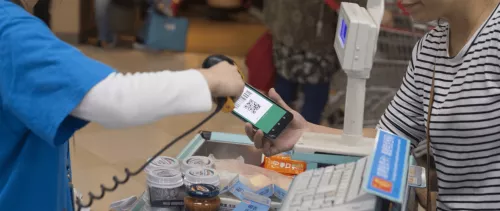
The COVID-19 crisis is challenging governments to step up their efforts to digitize public management. International trade is no exception. This is an opportunity to make a qualitative leap towards the modernization of foreign trade procedures through technologies such as blockchain.
The need for government authorities to exchange documents, usually in paper format, to comply with requirements relating to the import, export, and transit of goods can constitute a barrier to trade. Processing an international trade transaction at a border crossing can require the exchange of around 36 documents on average, and up to 240 copies when financing is also considered.
It is estimated that exchanging paper documents reduces potential international trade by 15%. The digitization and modernization of customs and logistics processes could restore that 15%, which would imply a US$ 1.8 trillion trade increase this year, and US$5.2 trillion per year globally up to 2050, according to Tradelens.
Facilitating document exchange in foreign trade operations in Latin America and the Caribbean (LAC) by using blockchain would make regional value chains more efficient, a much-needed step forward for trade after the pandemic. These efficiencies would boost private-sector efforts to relocate part of the production chains for given products or services to Latin America (nearshoring) and would foster preferential trade by leveraging the rich networks of trade agreements that are already in force.
Blockchain in trade: the IDB and WEF partnership
Since 2018, the Inter-American Development Bank (IDB) and the World Economic Forum (WEF) have worked together to validate blockchain’s potential for increasing efficiency, transparency, and interoperability in the trade ecosystem.
As part of this joint effort, the IDB’s Integration and Trade Sector recently published two reports that seek to promote the use of blockchain in trade: “Windows of Opportunity: Facilitating Trade with Blockchain Technology,” a white paper published in partnership with the WEF, and “Blockchain and international trade: new technologies to increase and improve Latin America’s international transition,” published in Spanish by its Institute for the Integration of Latin America and the Caribbean (INTAL). The latter includes a chapter entitled “Tracing products back to their origin: facilitating regional trade through blockchain” by Rafael Cornejo.
Rethinking the Integrated Process of Origin (IPO)
One of the documents exchanged in preferential foreign trade is the certificate of origin. Exporters must obtain it to be able to export within their trading bloc without having to pay customs duties.
There are currently three phases in trade operations impacted by the regulations contained in trade agreements on rules of origin. These phases work independently and in isolation from one another in terms of documentation.
- Phase 1: The manufacturing process of the exported good
- Phase 2: Issuing the declaration and certification that the good qualifies as an originating good
- Phase 3: Control and verification of origin
Implementing an Integrated Process of Origin (IPO) using blockchain would merge these three phases into a single process, improving access to tariff preferences. The main advantages would be:
- Access to secure input information provided by the producer and the issuer of the certification of origin to determine compliance.
- Greater security for operators within preferential trade and better information on the origin of goods.
- Customs facilities can focus efforts on verifying the least reliable import operations.
Figure 1. Data Providers and IPO Users

Source: Rafael Cornejo, “Trazar desde el origen: facilitando el comercio regional con blockchain [Tracing products back to their origin: facilitating regional trade through blockchain], Integration & Trade Journal no. 46 (IDB).
What are the advantages of using blockchain in IPOs?
Blockchain has the potential to improve and facilitate the operational conditions of trade in goods imported under preferential schemes. Applying this technology to certifying the origin of a good leads to greater security and more guarantees, contributes to streamlining the monitoring process by providing more reliable data on the origin of each product, and facilitating the application of risk analysis criteria. The following chart summarizes the benefits in each of the phases described above.
Figure 2. Advantages of the IPO that derive from the use of blockchain

Source: Rafael Cornejo, “Trazar desde el origen: facilitando el comercio regional con blockchain [Tracing products back to their origin: facilitating regional trade through blockchain], Integration & Trade Journal no. 46 (IDB).
Blockchain would help implement the extended cumulation of origin,1 which has yet to be put in place appropriately and effectively in LAC. It would also increase the efficiency of trade transactions, therefore helping to increase preferential trade operations. It won´t be necessary to prove that a specific product qualifies as an originating good because the supply chain itself would show whether it qualified for preferential market access.
Who are the stakeholders in an IPO?
Implementing an IPO is a process that involves both the public and private sectors. Stakeholders include private trade operators who participate in exporting products, government authorities processing and overseeing these procedures, and origin-certifying bodies such as chambers of commerce or industry associations.
By : Alejandra Radl - Jimena Sotelo

